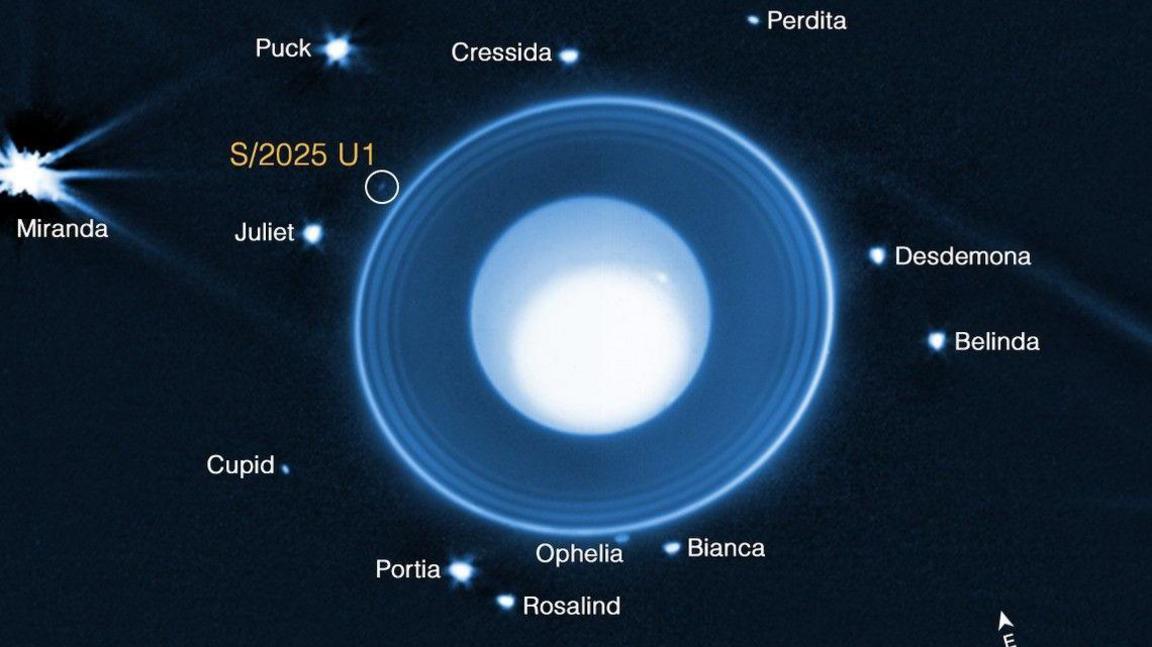James Webb space telescope finds a new tiny moon around Uranus

The new moon - called S/2025 U1 - is shown here. It's so small that you might not have been able to spot it without the label!
- Published
It's time to welcome the 29th moon orbiting Uranus - the catchily titled S/2025 U1!
Scientists spotted the new member of the planet's moon family using Nasa's famous James Webb space telescope.
Even though S/2025 U1 is pretty tiny, measuring only 10km wide, the team behind the moon spotting say that it's big news.
Lead scientist Maryame El Moutamid said: "It's a small moon but a significant discovery, which is something that even Nasa's Voyager 2 spacecraft didn't see during its flyby nearly 40 years ago."
More space stories:
Could Uranus be warmer than we thought?
- Published25 July
James Webb space telescope spots its first exoplanet
- Published27 June
Scientists unveil largest ever map of the Universe
- Published13 June

This image from the James Webb telescope shows just some of Uranus' moons
The moon was spotted thanks to the James Webb telescope being able to do 40 minute long exposures. This is when the camera's shutter stays open to let as much light in as possible, allowing scientists to see the undiscovered moon.
It's the smallest and faintest of Uranus' inner moons, so there's still a lot to learn and find out about S/2025 U1.
And that name is only temporary - its official name will be approved by the International Astronomical Union (IAU), which gives names to objects found in space.
The other moons of Uranus are all named after characters from classic writers William Shakespeare and Alexander Pope, with names like Desdemona and Ophelia.

Uranus as seen by Nasa's Voyager 2
Along with Neptune, Uranus is an ice giant that's extremely cold and windy.
It appears blue because of the methane that makes up some of its atmosphere.
So far, Uranus has only been visited by the Voyager 2 spacecraft back in 1986, where it missed new moon S/2025 U1.
The new finding will be peer-reviewed soon, which means it'll be double checked by other scientists working in the same area.
